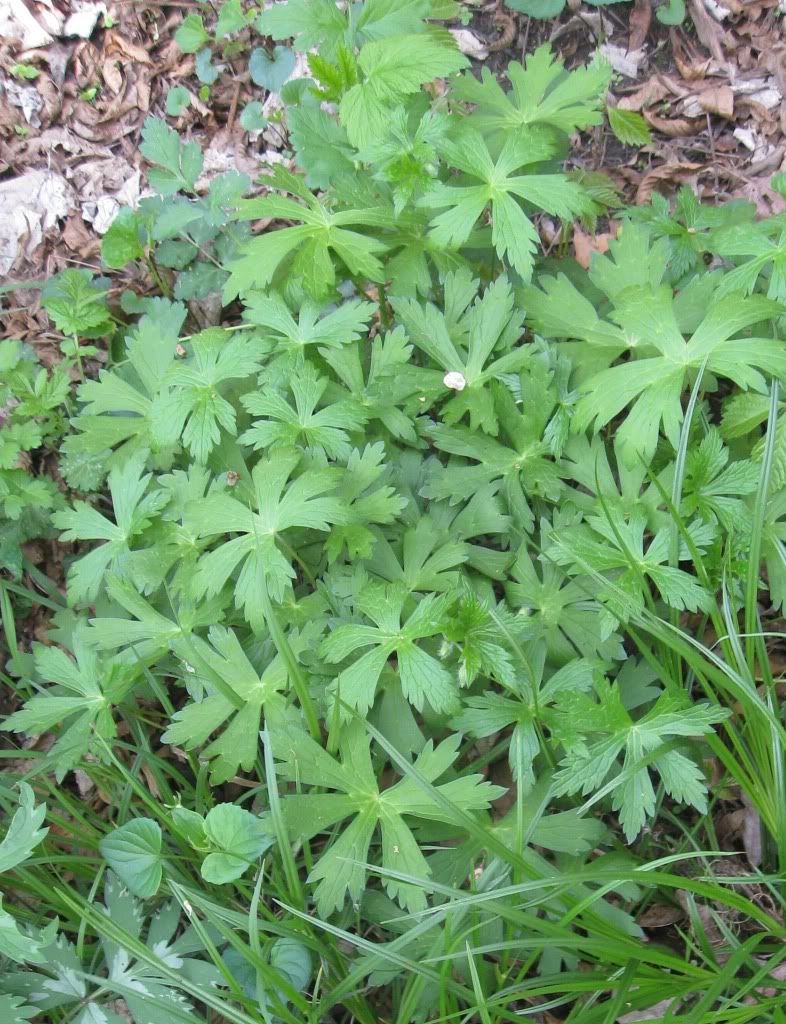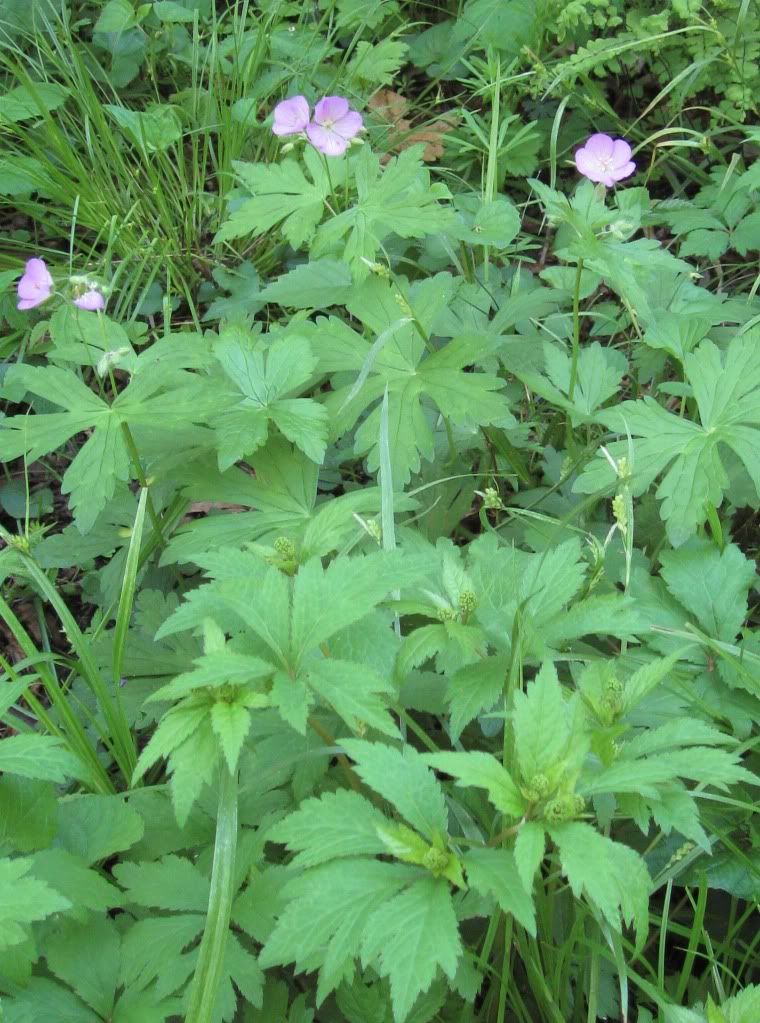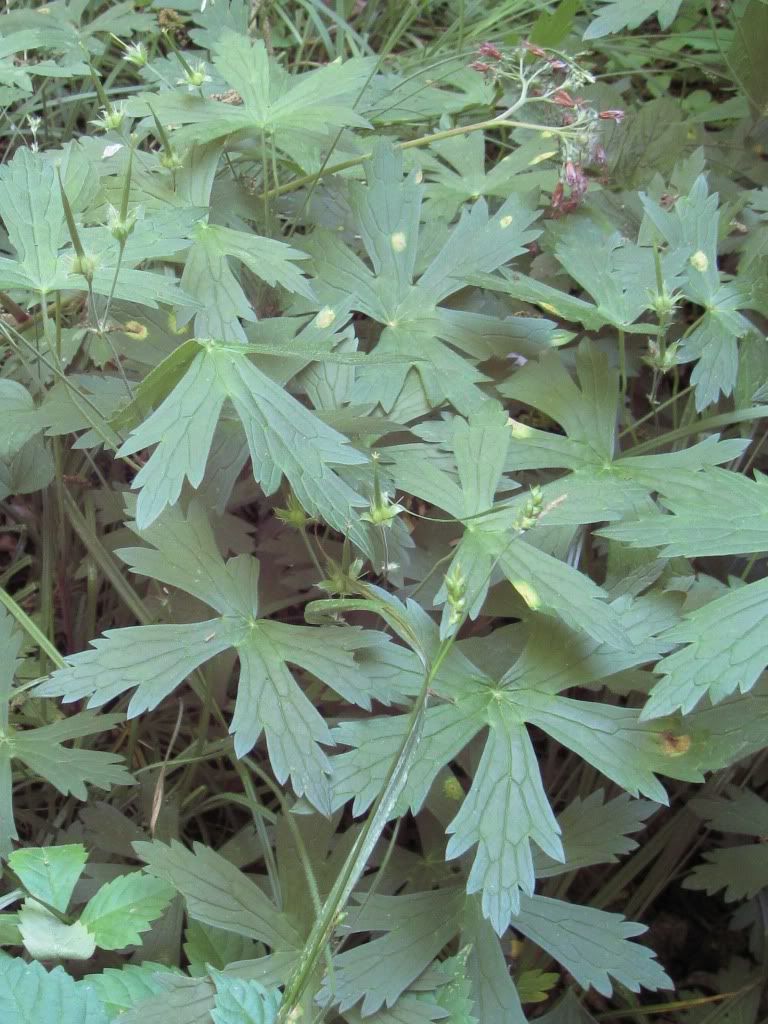The Iowa House and Senate adjourned for the year today. Tomorrow Bleeding Heartland will sort through the state budget compromises and other news about the survivors (mental health reform, solar tax incentives) and casualties (property tax reform, nuclear power bill) of the session’s busy final days.
For now, enjoy a couple of wild geranium photos after the jump. One of them includes other native plants I can’t identify, so I hope readers with expertise in this area will share their wisdom. Wild geranium is found in woodland areas throughout Iowa and the eastern U.S. The more familiar geranium houseplant is native to South Africa.
This is an open thread: all topics welcome.
Wild geranium leaves have a distinctive look. Sylvan Runkel and Alvin Bull write in Wildflowers of Iowa Woodlands,
Large leaves, to 6 inches across, are essentially round but so deeply cut into three to five lobes that the roundish shape tends to escape notice. Margins of each lobe have prominent teeth.
Here’s a view of the plant without flowers; a few buds are visible a little below the center of this photo.
Wild geranium can bloom anytime from April to June. Like everything else, they were out early this year in Iowa. Flowers can range in color from pink to light purple. The ones I’ve seen in central Iowa are pink. The blooms are shaped like a shallow bowl, although sometimes the five petals spread out so that gaps appear between them. The flowers look mostly closed early in the morning and in the evening.
In the foreground of that picture there’s some kind of grass with what look like small grains near the top, as well as a plant with buds that will soon be tiny yellow flowers. Anyone in the Bleeding Heartland community know what those are? If so, please post a comment in this thread or send an e-mail to desmoinesdem AT yahoo.com.
LATE UPDATE: It’s Canadian black snakeroot. I posted a better picture at the end of this diary.
Alum root is one of the other common names for wild geranium. Native American tribes used its roots and leaves on mouths, eyes, and even feet. Runkel and Bull write,
Chippewa Indians dried and powdered the roots to provide a treatment for sore mouth, especially in children. Along with the Ottawa tribe, they also made a tea of the plant for treating diarrhea.
Meskwaki brewed a sort of root tea for toothache and neuralgia. They also made a poultice of pounded roots for hemorrhoids. Boiling the base of the plant produced a “tea” for drinking and a poultice for burns.
Pioneers used the wild geranium as an astringent and as a diarrhea treatment, especially for infants and people with delicate stomachs.
LATE UPDATE: Here’s a picture showing the wild geranium plant a few weeks after the flower petals dropped off. The seed pods are visible. Runkel and Bull note that “geranium” comes from the Greek word meaning “heron” or “crane,” “probably because the seed capsule resembles the beak of the bird.”




1 Comment
one of the goldenrods? (n/t)
albert Wed 9 May 10:31 PM